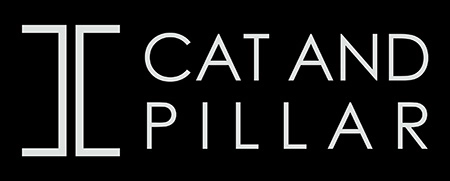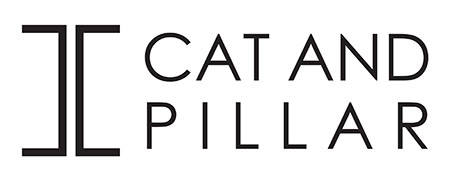Things to Note
Contents
- What happens after I file my trademark with you?
- Does filing my trademark in one country grant me rights in other countries?
- What are your fees?
- What is the Safe Route? What is included in the assessment report?
- What are the common obstacles to registration?
- How do I check if my trademark has been taken by someone else?
- How long is my trademark protected for?
What happens after I file my trademark with you?
Filing
We will file your trademark with the respective trademark offices within 3-5 business days. For Singapore, your trademark would be filed instantaneously with the office. Once your trademark has been filed, you will receive a notification from us.
Examination
The examination of your trademark will usually take a few months to a year, depending on the country you are filing your trademark in. If there are any objections to your trademark, we will advise you on how you can overcome them. You may check on the status of your trademark via your portfolio by logging into your account.
Publication and Registration
Once your trademark has been approved by the office, it will be published to allow for third parties to have an opportunity to oppose to the trademark application. This opposition period lasts for one to three months, depending on the country. This process ensures that the trademark application does not infringe on the rights of any third party and can occur before or after the trademark is registered.
For most countries, there is no additional fee for publication. However, for some countries such as Philippines, Japan, South Korea and Taiwan, there is a second part fee that is due upon the acceptance of the trademark that needs to be paid before the trademark is published or registered.
It is worth noting that only between 1 to 2% of applications are opposed to. In the case where your trademark is opposed, we will advise you how you can respond or refer you to a suitable law firm who is able to assist you on this matter.
Does filing my trademark in one country grant me rights in other countries?
Trademark protection is territorial in nature. As such, registering your trademark in one jurisdiction will not grant you protection in any other jurisdiction.
What are your fees?
Our filing fees will be automatically calculated and displayed as you use our trademark application interface. Our renewal fees will also be automatically displayed for Australia, New Zealand and Singapore trademark renewals.
For a full schedule of our fees, please refer here.
What is the Safe Route? What is included in the assessment report?
If you select the Safe Route for filing your Singapore trademark, we will provide you with a comprehensive report of your trademark application on all potential grounds of refusal.
Trademark examination is sometimes subjective and we cannot guarantee that our assessment will always match the outcome of the examination done by the trademark registry in Singapore.
Nevertheless, we are confident that we are more than qualified to provide an assessment of your trademark application based on years of experience examining trademarks in the Singapore trademark registry. If we get our assessment wrong and your trademark is deemed to be unregistrable by the IP Office for whatever reason, we will provide you with a partial refund of our fees according to our terms and conditions.
What are the common obstacles to registration?
There are three common objections that are raised by the trademark registry against trademark applications:
- Lack of distinctiveness
- Descriptive of goods and services – e.g. your trademark is “EasyWear” for slippers, or “Bubbly” for the soap you are selling. The trademark would be perceived to be a description of the goods or services, rather than a brand name.
- Merely a promotional slogan – e.g. your trademark is “Your gift is in the present, savour it”. While there is an ongoing debate on the distinctiveness of slogans, the majority opinion is that all slogans are inherently promotional in nature and may not be viewed by customers as trademarks.
- Merely a simple shape – this is usually the case when the trademark is a simple shape such as a circle or oval.
- Consists of a pattern – when your trademark consists of a graphic pattern, it may appear to be a design of your product rather than a trademark intended to denote the commercial source of your product.
- Similar to an earlier trademark
- Are the trademarks visually similar? Do they contain the same or similar looking words or images?
- Are the trademarks aurally similar? Do they contain words that would be pronounced in a similar way?
- Are the trademarks conceptually similar? Do they convey a similar brand concept?
- Are the trademarks used for identical or similar goods and services?
- Vaguely worded or misclassified goods and services
A trademark is a sign that is supposed to help your customers recognise your goods and services among similar goods and services provided by other businesses. When your trademark lacks distinctiveness, it is unable to serve this function of distinguishing your goods and services. These are some common reasons why your trademark may not be distinctive:
A trademark will fail to distinguish your goods and services if it is identical or similar to another trademark that is used for similar or identical goods and services.
To determine if your trademark is similar to another trademark, here are a few questions to ask:
E.g. “Helium” vs “Hellium”
E.g. “Adidas” vs “Ah Deedas”
E.g. “Holiday Bahamas” and “Vacation Bahamas”
E.g. you intend to use your trademark for “clothing” and the other trademark has been registered in relation to “t-shirts, jackets and bottoms”.
This is by far the most common reason why trademark applications are objected to by trademark registries around the world. Most people are unaware of that the description of their goods and services needs to follow a certain standard defined by the trademark registry. Furthermore, each trademark registry has a slightly different standard for assessing these descriptions.
For example, the description “retail services” would be perfectly fine for a Singapore application. However, in most other countries, it would be unacceptable, as you are required to specify the type of products being sold under the retail services. For example, “retail services in relation to clothing”.
Fortunately, most offices also have their own list of pre-approved goods and services that applicants can use to avoid unnecessary objections. At Cat and Pillar, we strive to only use goods and services from the pre-approved list of each country. This will save you unnecessary fees and time needed to overcome these objections.
How do I check if my trademark has been taken by someone else?
Before filing your trademark, you may wish to perform a trademark search to ensure that your trademark has not already been filed by someone else.
As trademark protection is territorial in nature, you will need to ensure that you are using the correct platform for the country you are filing your trademark in.
Also, do remember that your trademark would only be deemed to conflict with another trademark if:
the trademarks are identical or similar to each other, and
- the trademarks are applied for identical or similar goods and services.
As such, if you find a trademark that is identical or similar to yours, it is important to check if it was filed for identical or similar goods and services in comparison to what you intend to file for yours.
Below are some official resources where you can search your trademark for free:
| International Search Platforms | |
|---|---|
| TMView by EUIPO |
A search platform developed by EUIPO, this platform covers over 70 countries and regions, including:
For the list of participating offices, click here. In particular, this search does not cover the following countries and regions:
|
| WIPO Global Brand Database |
Provided by the World IP Office (WIPO), this search does not cover as many countries as TMView, but covers the following countries that are not covered by TMView:
|
| National and Regional IP Office Search Platforms | |
|
Australia trademark search by IP Australia Brunei trademark search by BRUIPO Canada trademark search by CIPO China trademark search by CNIPA EUIPO trademark Search by EUIPO Hong Kong trademark search by HKIPD Macao trademark search by DSEDT New Zealand trademark search by IPONZ Singapore trademark search by IPOS Taiwan trademark search by TIPO USA trademark search by USPTO |
|
International Search Platforms
1. TMView by EUIPO
A search platform developed by EUIPO, this platform covers over 70 countries and regions, including:
- all European Union countries
- USA
- Canada
- Australia
- Japan
- South Korea
For the list of participating offices, click here.
In particular, this search does not cover the following countries and regions:
- Hong Kong
- Indonesia
- Macao
- Singapore
- Taiwan
- Vietnam
Provided by the World IP Office (WIPO), this search does not cover as many countries as TMView, but covers the following countries that are not covered by TMView:
- Indonesia
- Singapore
- Vietnam
National and Regional IP Office Search Platforms
Australia trademark search by IP Australia
Brunei trademark search by BRUIPO
Canada trademark search by CIPO
China trademark search by CNIPA
EUIPO trademark Search by EUIPO
Hong Kong trademark search by HKIPD
Macao trademark search by DSEDT
New Zealand trademark search by IPONZ
Singapore trademark search by IPOS
Taiwan trademark search by TIPO
USA trademark search by USPTO
How long is my trademark protected for?
For most countries, trademark registrations are protected for a period of 10 years from the filing date. By renewing your trademark every 10 years, you will be able to protect your trademark as long as you want to.
For Japan and South Korea, you would have the option of protecting your trademark for 5 years at a lower cost.
For Macao, trademark registrations are protected for 7 years and are renewable every 7 years.


